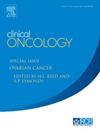Carbon Ion Radiotherapy Reirradiation for Recurrent Malignancy: A Systematic Assessment
IF 3.2
3区 医学
Q2 ONCOLOGY
引用次数: 0
Abstract
Reirradiation presents a significant challenge despite recent advances in modern radiation therapy. Carbon ion radiotherapy has garnered increasing attention among radiation oncologists due to its potentially superior physical dosimetric distribution and radiobiological advantages. This systematic review comprehensively evaluated clinical outcomes from 27 original studies on the use of carbon ion reirradiation for locoregional recurrent malignancies, including those affecting the central nervous system, lung, head and neck, pancreas, liver, rectum, and gynecological sites.
The findings suggest that carbon ion reirradiation for locoregional recurrent malignancies yields favorable clinical outcomes with a relatively low incidence of high-grade toxicities. For recurrent nasopharyngeal carcinoma, the reported 2-year overall survival, local control, regional control, and metastasis-free survival rates were 83.7%, 58.0%, 87.3%, and 94.7%, respectively. Grade ≥3 late nasopharyngeal necrosis occurred in 16% (33/206) of cases. In the case of recurrent glioblastoma, median overall survival and local control survival were reported at 13 and 7 months, respectively, with minimal high-grade complications; observed low-grade toxicities included acute involuntary movements, incomplete hemiparesis, and late-onset dysphasia. For recurrent lung cancer, 2-year local control and overall survival rates were reported as 54.0% and 61.9%, respectively. Grade ≥3 toxicities included two cases of radiation pneumonitis and one case of bronchopleural fistula. In recurrent pancreatic cancer, 1-year local control, progression-free survival, and overall survival rates were 53.5%, 24.5%, and 48.7%, respectively. A high-grade complication of Grade 3 acute duodenal stenosis was observed in one patient. Additionally, concurrent chemotherapy with carbon ion reirradiation was associated with minimal high-grade additive toxicities. Overall, carbon ion reirradiation appears to be a potentially safe and effective reirradiation modality for treating locoregional recurrent malignancies, though data remains limited.
碳离子放射再照射治疗复发性恶性肿瘤:系统评价。
尽管现代放射治疗最近取得了进展,但再照射仍然是一个重大挑战。碳离子放射治疗由于其潜在优越的物理剂量分布和放射生物学优势而引起了放射肿瘤学家越来越多的关注。本系统综述全面评估了27项原始研究的临床结果,这些研究使用碳离子再照射治疗局部复发性恶性肿瘤,包括影响中枢神经系统、肺、头颈部、胰腺、肝脏、直肠和妇科部位的肿瘤。研究结果表明,碳离子再照射治疗局部复发恶性肿瘤可获得良好的临床结果,且高级别毒性发生率相对较低。对于复发性鼻咽癌,报告的2年总生存率、局部对照、区域对照和无转移生存率分别为83.7%、58.0%、87.3%和94.7%。≥3级晚期鼻咽坏死占16%(33/206)。在复发性胶质母细胞瘤的病例中,中位总生存期和局部对照生存期分别为13个月和7个月,高度并发症最少;观察到的低度毒性包括急性不自主运动、不完全偏瘫和迟发性吞咽障碍。对于复发性肺癌,2年局部控制率和总生存率分别为54.0%和61.9%。≥3级毒性包括2例放射性肺炎和1例支气管胸膜瘘。复发性胰腺癌的1年局部控制率、无进展生存率和总生存率分别为53.5%、24.5%和48.7%。在1例患者中观察到3级急性十二指肠狭窄的高度并发症。此外,同步化疗与碳离子再照射与最小的高级别附加毒性相关。总体而言,碳离子再照射似乎是治疗局部复发性恶性肿瘤的一种潜在安全有效的再照射方式,尽管数据仍然有限。
本文章由计算机程序翻译,如有差异,请以英文原文为准。
求助全文
约1分钟内获得全文
求助全文
来源期刊

Clinical oncology
医学-肿瘤学
CiteScore
5.20
自引率
8.80%
发文量
332
审稿时长
40 days
期刊介绍:
Clinical Oncology is an International cancer journal covering all aspects of the clinical management of cancer patients, reflecting a multidisciplinary approach to therapy. Papers, editorials and reviews are published on all types of malignant disease embracing, pathology, diagnosis and treatment, including radiotherapy, chemotherapy, surgery, combined modality treatment and palliative care. Research and review papers covering epidemiology, radiobiology, radiation physics, tumour biology, and immunology are also published, together with letters to the editor, case reports and book reviews.
 求助内容:
求助内容: 应助结果提醒方式:
应助结果提醒方式:


